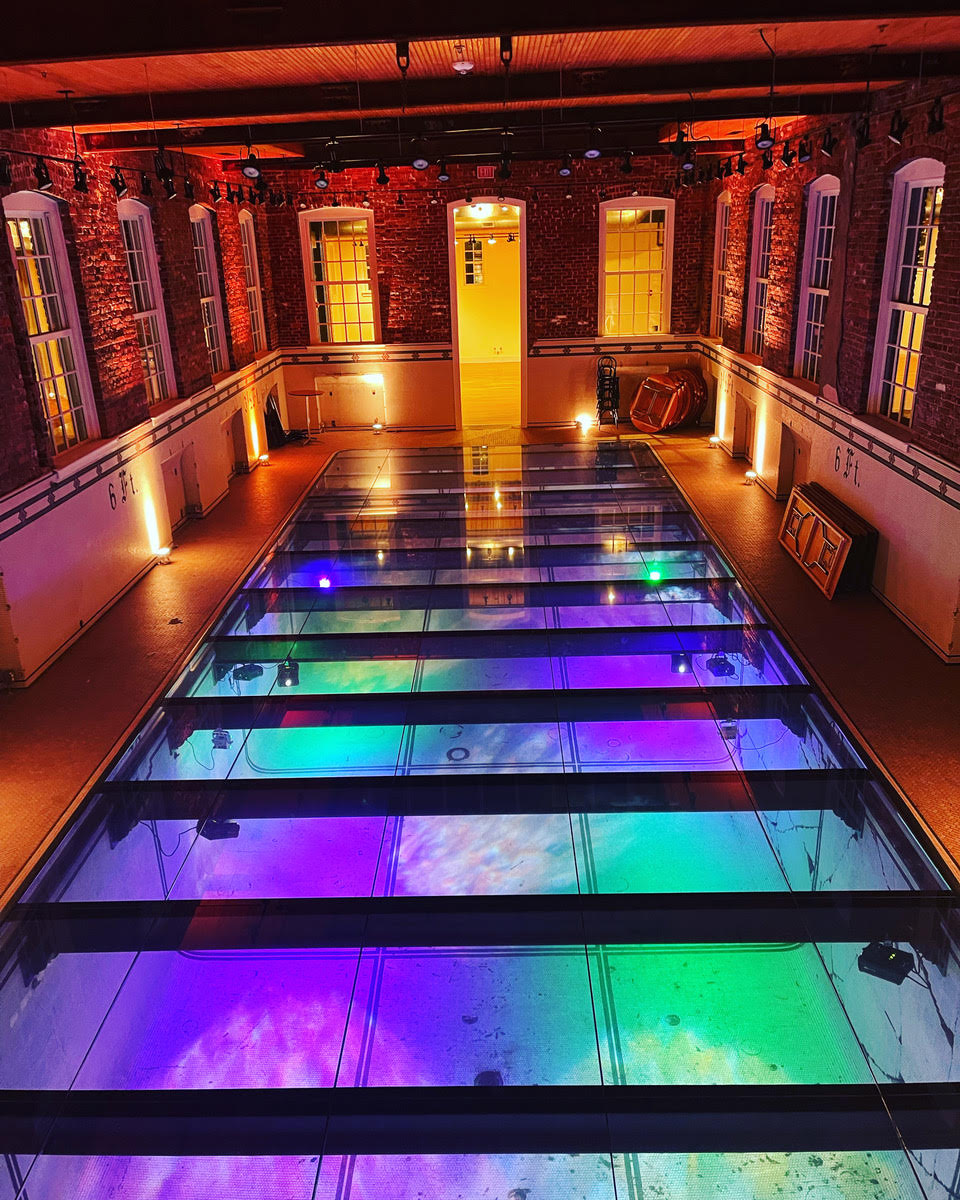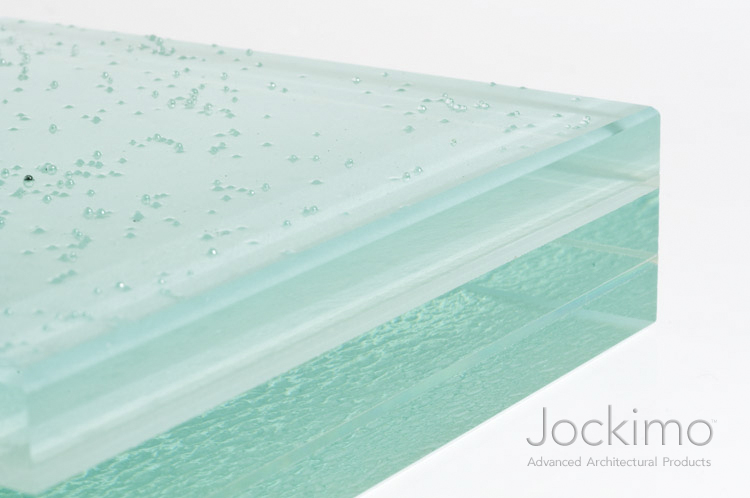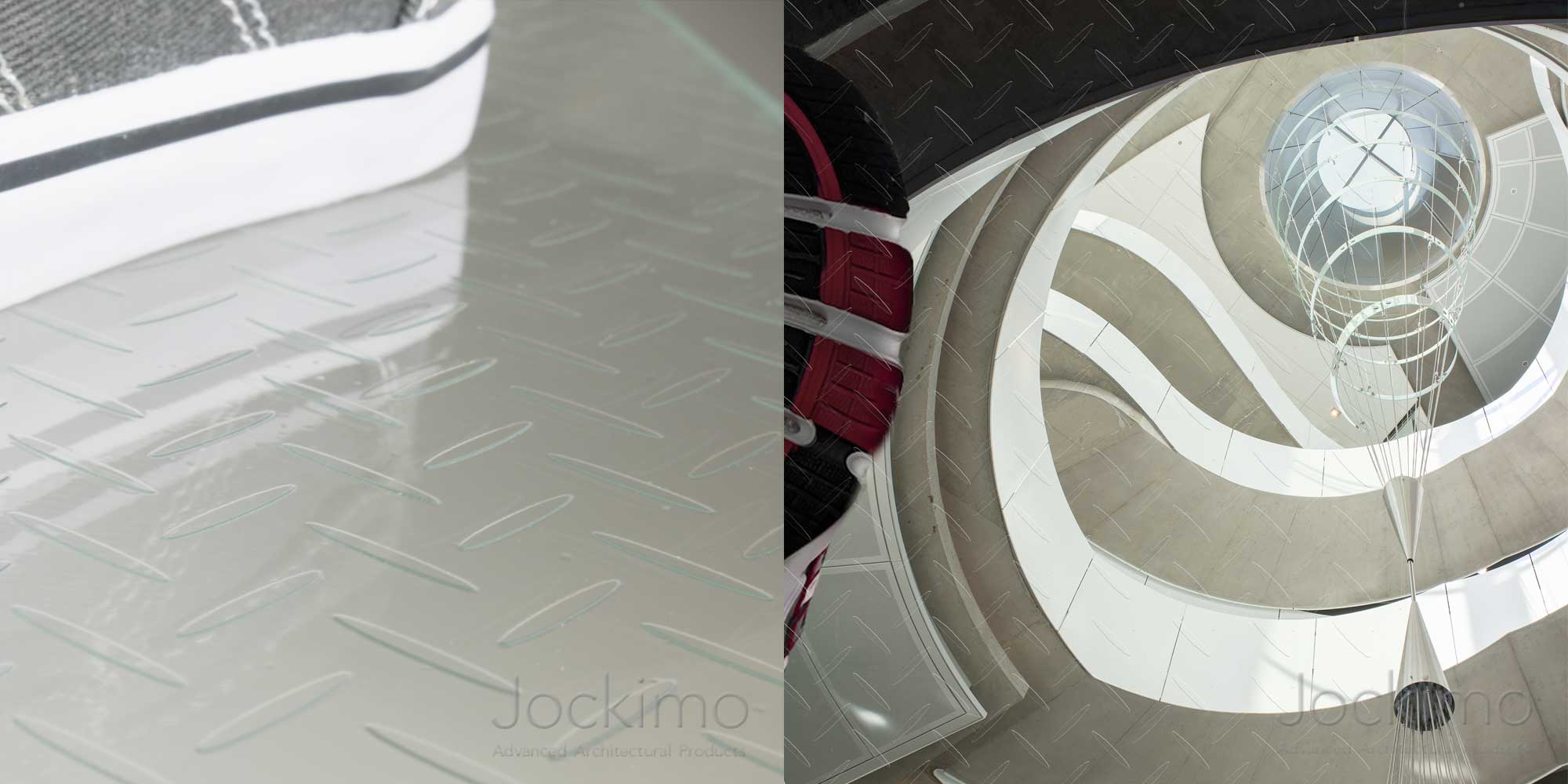6 Questions for Glass Manufacturers about Anti-Slip Glass Flooring
- Details

Ask These Slip-Resistant Glass Flooring Questions Before Buying
The right anti-slip glass flooring treatment offers a laundry list of benefits. Great safety. Aesthetically pleasing high-gloss appearance. Extreme durability. The wrong treatment can range from unsightly to unsafe. To ensure you’re getting the best slip-resistant treatment possible, run these six questions by your glass manufacturer before signing on the dotted line.
Don’t Work with a Glass Manufacturer Until They Answer These Questions
-
Do you use anti-slip glass?
The first important step is determining whether the glass manufacturer uses slip-resistant glass at all. If they don’t, that’s a giant red flag.
Anti-slip glass is a crucial component to glass flooring safety. If you have glass flooring installed without the proper consideration of trip, slip, and fall hazards, you or your business could be liable for any resulting injuries.
-
Do you use third-party testing?
The safety of your glass flooring should always be your primary concern. Make sure any testing done is performed through a neutral, objective, credible third-party agency.
(Not convinced about how important anti-slip safety testing is? Check out these pictures of what can happen when you spring for cheap glass flooring.)
-
Do you use an anti-slip coating or chemical treatment?
Once you’ve ensured the glass manufacturer uses anti-slip glass, find out whether they recommend a coating or a chemical treatment.
Chemical treatment includes processes like acid etching. While this is a viable anti-slip technique, it generally improves slip resistance for water more effectively than for other potential lubricants.
This includes:
- Oil
- Grease
- Ambient dust
If your flooring could be exposed to anything other than water alone, this is something to keep in mind.
Coating techniques tend to perform better in more diverse situations.
-
What kind of abrasive do you use in your slip-resistant glass?

Today’s anti-slip coatings are generally transparent with a fine abrasive to increase friction. Be wary of glass manufacturers who use silica sand. Because of its brittle nature, it can break down and become less effective under even normal foot traffic.
Something like alumina is more durable and performs better over time.
If you work with Jockimo specifically, you can opt for a GlassGrit™ anti-slip walking surface. This best-in-industry solution won’t lose its anti-slip properties over time.
Please note that ceramic frit products can eventually show wear marks over time.
-
What standards and test equipment do you use to determine the slip-related safety of your glass flooring?
Testing alone is not enough. The right tests, equipment, and floor-specific considerations must be taken into account.
Real-Life Use Considerations
Make sure the testing accounts for all potential situations:
- Users walking across the flooring, including change of direction.
- Users stopped on a surface.
- Wet conditions.
- Dry conditions.
Dynamic vs. Static Coefficient of Friction
This becomes quite technical, but it’s important to remember one thing.
It’s not imperative for you to learn the exact mechanisms of how these slip tests work. It is important for you to be confident your glass manufacturer accounts for the right factors in their third-party testing.
With that in mind, wet and dry testing for the dynamic coefficient of friction (DCOF) should be used.
While test results for the static coefficient of friction (SCOF) can be valid in dry conditions, SCOF wet testing does not provide reliable safety data.
Best Standards and Test Equipment for Determining Slip Resistance

The following are considered best practices today in slip-resistance testing. You can be confident in the results from any of these tests:
- SA HB 198:2014 (Australian)
- Australian Test Method (British Pendulum) – AS 4586 – 2013, Appendix A
- AS 4586 – 2013
- AS 4663 – 2013
- British Pendulum Test Equipment
- United Kingdom Slip Resistance Group (UKSRG) Standards
- Issued 4/2011
- Uses British pendulum test equipment
- European Standard – EN 13036-4
- Widespread adoption
- Uses British pendulum test equipment
- BS7976-2
- Uses the British pendulum test
When you receive the results of your test, make sure they are tied to a specific test procedure, test standard, and test equipment. Without those things, the number alone is meaningless and not a reliable indicator of slip resistance.
-
Does your slip-resistant glass use epoxies or polyurethanes?
Avoid older anti-slip treatments that rely heavily on epoxies and polyurethanes. Over time, these can:
- Yellow
- Harden
- Crack
- Peel
Have Any Questions about Your Glass Flooring Project?
Want to know more about anti-slip treatments? Need an estimate for an upcoming glass floor project? Simply have a question about architectural glass products?
Don’t hesitate to ask!
We’re Jockimo, and for decades we’ve specialized in custom architectural glass manufacturing. We’re always happy to help.


